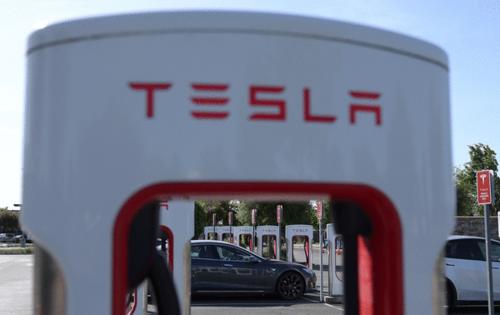Are Tesla Superchargers really open to other EVs in California? It's complicated
Published in Automotive News
If you visited Elon Musk’s X last Saturday and clicked on Gov. Gavin Newsom’s press office account, you could watch him pull up to a Tesla charging station, step out of an electric Ford Mustang Mach-E, and announce that Tesla Superchargers were now open to non-Tesla EVs.
It’s a questionable assertion. Owners of electric Fords, Chevys, BMWs, Mercedes-Benzes, Lucids, Nissans, Rivians and the rest can’t count on it just yet.
Two days after Newsom’s video, on Monday, news broke that the Tesla Supercharger network was in disarray. Musk, according to multiple media reports and social media postings, had fired or laid off his entire Supercharger team, including its senior director, Rebecca Tinucci.
A source, who declined to be identified for fear of retribution by Musk, told The Times: “They did not fire the entire Supercharger team. They mostly fired site acquisition, project management, marketing and some other things.”
Whatever the damage, Musk issued no denials. But he did post on X that Tesla plans to slow the growth of new Supercharger stations and focus on the stations it already has.
Meanwhile on Monday, sales numbers for electric vehicles in California were released, and they were grim, especially for Tesla, whose California new registrations declined 7.8% in the first quarter of the year, following a 9.8% drop the previous quarter.
Sales for the overall California EV market did grow in the first quarter — by 555 cars. The rise to 90,296 cars and light trucks, from 89,741 was under 1%, a hair’s breadth from flat, according to the California New Car Dealers Assn. EV market share was practically flat too, declining slightly from 21.2% of all new vehicles sold in last year’s fourth quarter to 20.9% for the first quarter this year.
It adds up to bad news for EV proponents and for Newsom, who in 2020 mandated that all new car sales by 2035 must be what the state calls zero-emission vehicles. (Plug-in hybrid cars burn fossil fuels and thus produce emissions, but because they also can run solely on batteries, California includes them in its definition. As many as 20% of new cars sold in 2035 can be plug-in hybrids.)
Under the mandate, automakers will have to sell such cars, but customers won’t have to buy them. If flat EV growth becomes a trend and not an aberration, that could undermine a key pillar in the state’s plan for a cleaner climate.
“Everything from interest rates to inflation to increased awareness of electric vehicle costs and challenges has negatively impacted EV demand,” said Karl Brauer, industry analyst at iSeeCars.com. “Even Tesla, the brand long seen as a shining example of how every automaker should approach personal transportation, now looks very much like a traditional automaker, with shrinking market share, stalled sales, falling profits, and massive layoffs.”
...continued
©2024 Los Angeles Times. Visit at latimes.com. Distributed by Tribune Content Agency, LLC.







Comments